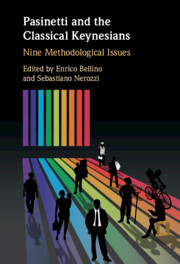7 results
5 - Causality vs. Interdependence
-
-
- Book:
- Pasinetti and the Classical Keynesians
- Published online:
- 17 February 2022
- Print publication:
- 24 February 2022, pp 112-156
-
- Chapter
- Export citation
Copyright page
-
- Book:
- Pasinetti and the Classical Keynesians
- Published online:
- 17 February 2022
- Print publication:
- 24 February 2022, pp iv-iv
-
- Chapter
- Export citation
Introduction
-
-
- Book:
- Pasinetti and the Classical Keynesians
- Published online:
- 17 February 2022
- Print publication:
- 24 February 2022, pp 1-12
-
- Chapter
- Export citation
Author Index
-
- Book:
- Pasinetti and the Classical Keynesians
- Published online:
- 17 February 2022
- Print publication:
- 24 February 2022, pp 317-322
-
- Chapter
- Export citation
Contributors
-
- Book:
- Pasinetti and the Classical Keynesians
- Published online:
- 17 February 2022
- Print publication:
- 24 February 2022, pp vii-viii
-
- Chapter
- Export citation
Contents
-
- Book:
- Pasinetti and the Classical Keynesians
- Published online:
- 17 February 2022
- Print publication:
- 24 February 2022, pp v-vi
-
- Chapter
- Export citation

Pasinetti and the Classical Keynesians
- Nine Methodological Issues
-
- Published online:
- 17 February 2022
- Print publication:
- 24 February 2022



